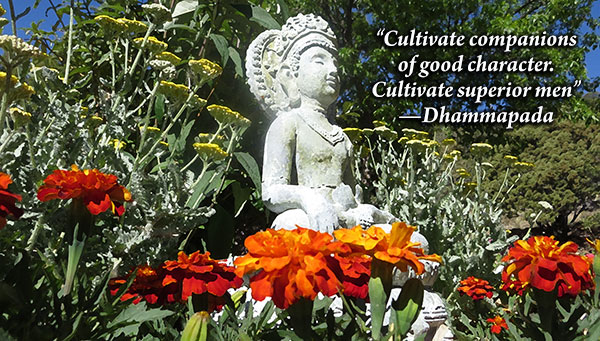
Q: May I ask for your explanation of the true sense of yajna [sacrifice] and Adiyajna [Primal Sacrifice] as used by Lord Krishna, and is it found in the sacred teachings of The Christ?
Although we naturally equate yajna with the fire sacrifice, agnihotra, yajna basically means any kind of offering.
Those who publish and distribute books of spiritual and scriptural knowledge are said to be engaging in Jnana Yajna. It is very common to call akhanda kirtan (especially of the Mahamantra) Nama Yajna.
As in virtually all spiritual matters, the supreme authority is the Bhagavad Gita. There we find the subject explained thoroughly and perfectly. No commentary is needed because Sri Veda Vyasa has expressed everything so clearly.
1. “The world is bound by the actions not done for sake of sacrifice. Hence for sacrifice you should act without attachment. In the beginning along with mankind Prajapati created sacrifice and said: ‘By this shall you increase: this shall be the granter of desires. May you foster the gods by this, and may the gods then foster you.
Then, each the others fostering, you shall attain the highest welfare. The gods, fostered by sacrifice, will give you desired enjoyments. But he who enjoys the gods’ gifts without offering to them is a thief.’ The good who eat the sacrificial remains are freed from all evils. The wicked eat their own evil who cook food only for themselves.
From food all beings are produced, and from rain all food is produced. From sacrifice there comes down rain. From action is born sacrifice. Understand that action arises from Brahma, Brahma arises from the Imperishable. Hence the all-pervading Brahma is eternally established in sacrifice” (Bhagavad Gita 3:9-15).
2. “The karma of one who is free from attachment, whose thought is established in knowledge, undertaking action for sacrifice, is wholly dissolved.
Brahman is the offering, Brahman is the oblation poured out by Brahman into the fire of Brahman. Brahman is to be attained by him who always sees Brahman in action.









 To an Indian Christian friend who asked about experiencing blankness and spontaneous bodily movements in meditation.
To an Indian Christian friend who asked about experiencing blankness and spontaneous bodily movements in meditation.